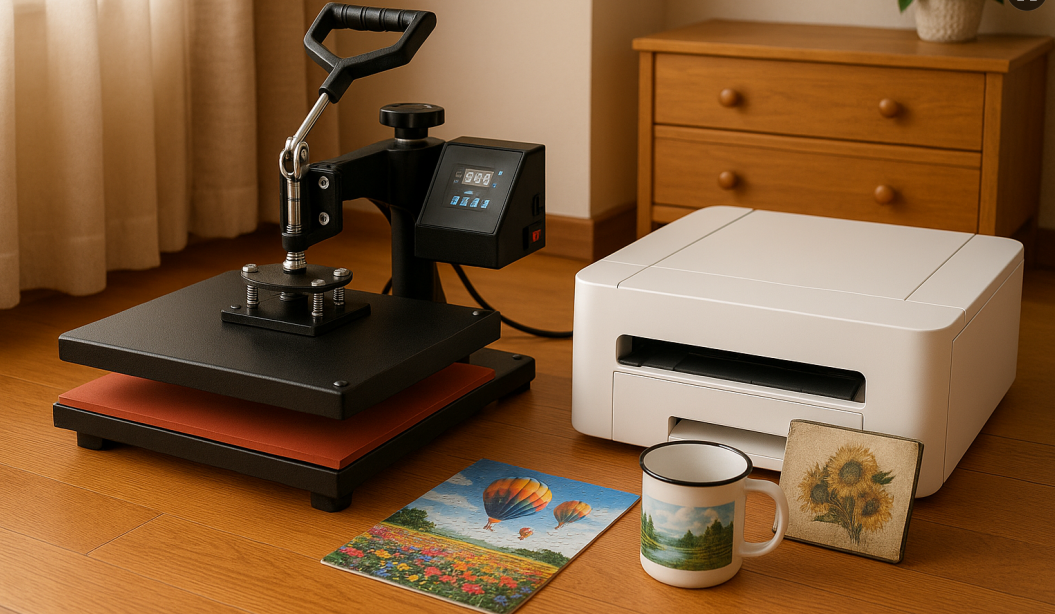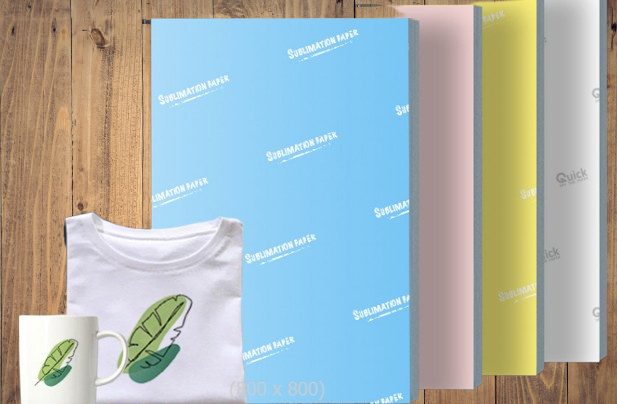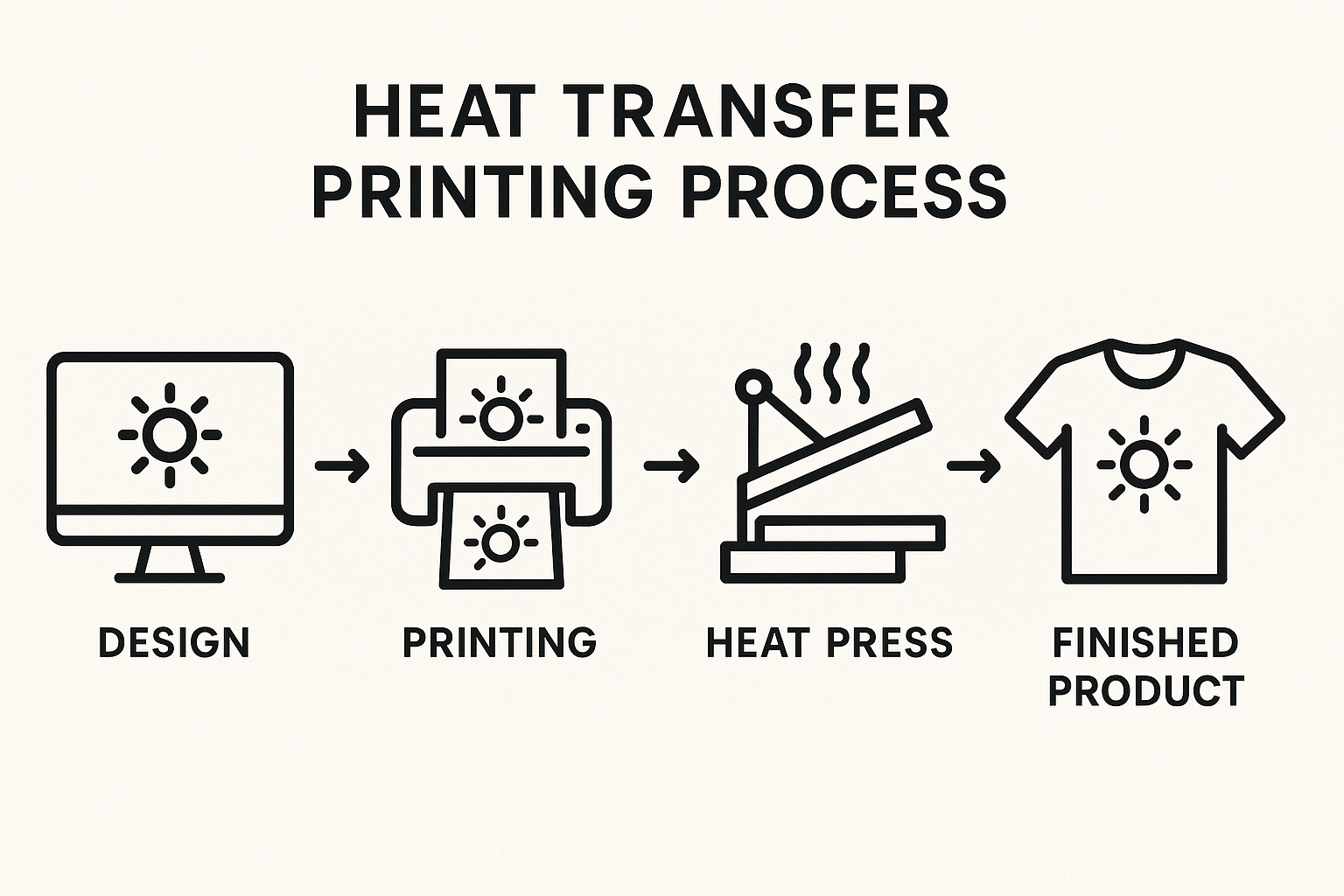Heat Transfer Printing: An Overview

Heat transfer printing is a versatile printing method that uses heat and pressure to transfer designs from a carrier material onto a substrate. This technique has gained significant popularity across various industries due to its efficiency, durability, and quality results.
What is Heat Transfer Printing?
Heat transfer printing is a process where designs are first printed onto a special transfer paper or film, and then applied to the final substrate using heat and pressure. The heat causes the ink to change from a solid state to a gas without becoming liquid (sublimation) or activates adhesives that bond the design to the target surface.
Types of Heat Transfer Printing
Sublimation Transfer: This process uses special inks that turn from solid to gas when heated. The gas then permeates the polyester fibers or polymer-coated surfaces and solidifies, creating a permanent bond.
Vinyl Heat Transfer: Pre-cut vinyl designs are placed on the substrate and heat-pressed to activate the adhesive backing.
Plastisol Transfers: Designs are printed with plastisol ink onto release paper, then transferred to fabrics using heat and pressure.
Digital Heat Transfers: Designs are digitally printed onto transfer paper using inkjet or laser printers, then heat-pressed onto the substrate.
Applications
Heat transfer printing is widely used in:
Textile industry (t-shirts, sportswear, promotional items)
Hard surface decoration (mugs, plates, phone cases)
Signage and advertising materials
Product decoration and branding
Advantages
Suitable for both small and large production runs
Excellent for detailed, multi-colored designs
Durable results with good wash fastness
Versatile application across various materials
Cost-effective for small batch production
Limitations
Some methods are limited to specific materials (e.g., sublimation works best on polyester)
May not be as durable as direct printing methods for certain applications
Heat-sensitive materials cannot be used as substrates
Quality depends on proper temperature, pressure, and time settings
Heat transfer printing continues to evolve with technological advancements, offering increasingly sophisticated options for decorating a wide range of products.



